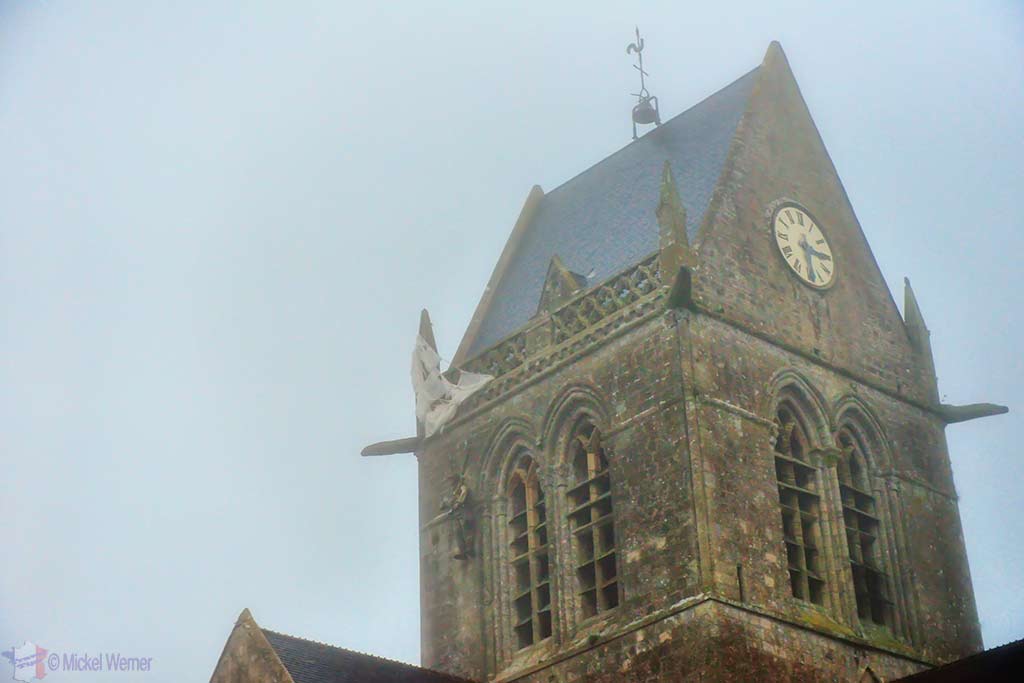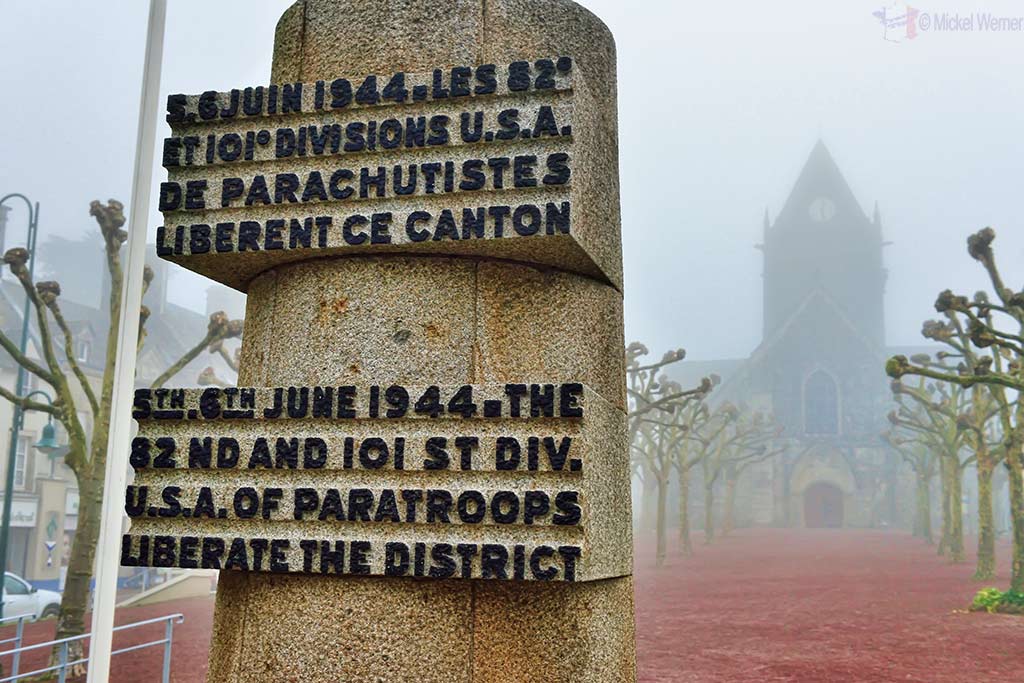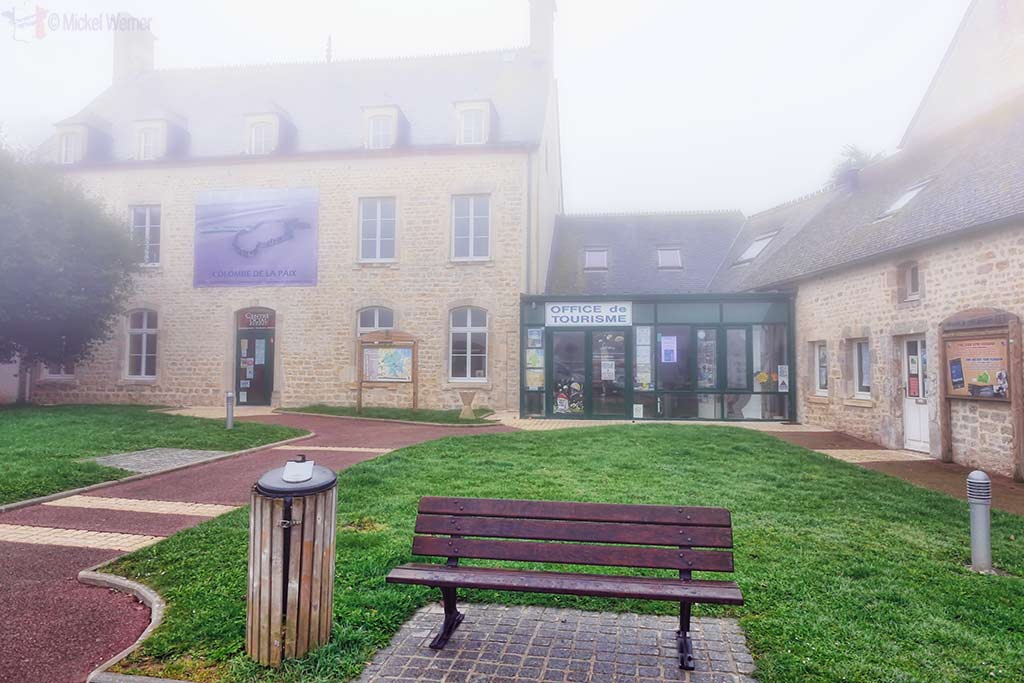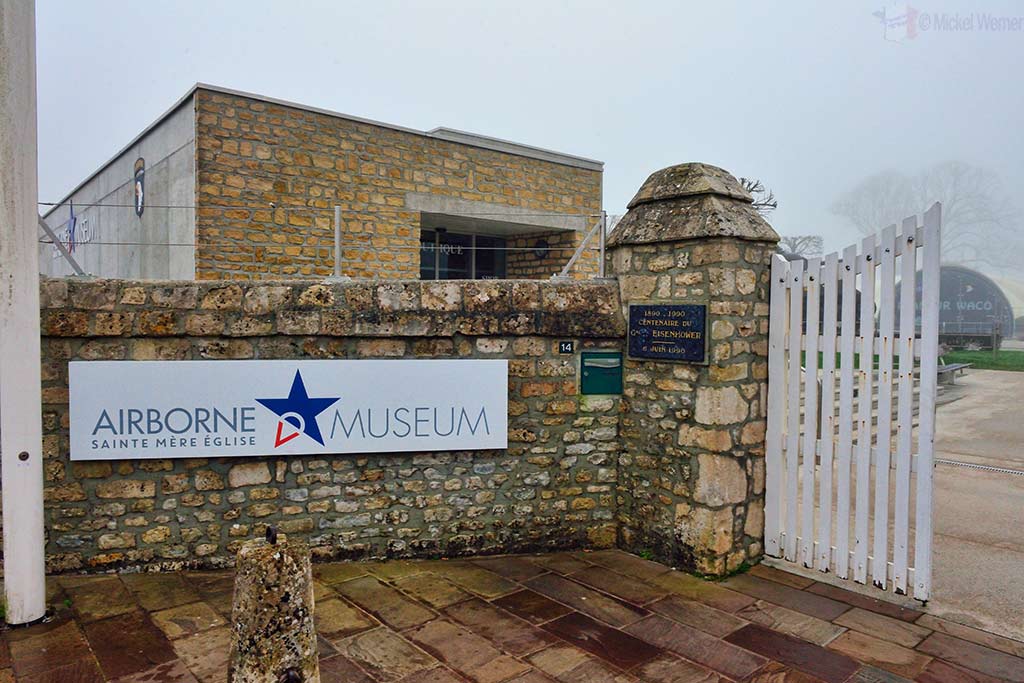Normally speaking the village of Sainte-Mere-Eglise should mean nothing to most people. Unless you are a WWII buff or a movie buff. The movie in question is “The Longest Day” starring none other than John Wayne trying to get to Sainte-Mere-Eglise during D-Day.
The village itself nowadays consists of some 2,500 inhabitants (that is, after it merged with 4 other villages in 2016). In other words, a hole in the ground. But it was a strategic village for D-Day during World War II since it was on the main road (N13) from the invasion Utah Beach, allowing the American soldiers to penetrate that part of Normandy and head for Cherbourg.
So Allied Command decided to send in American Paratroopers to invade Sainte-Mere-Eglise and hold it until the reinforcements arrived from Utah Beach. 82nd and 101st Airborne units reenforced by Canadian, British and French troops landed in and close to Sainte-Mere-Eglise.
Notre-Dame-de-l’Assomption church
One of the scenes that made the village famous in the movie was a paratrooper, John Steele, caught during his landing on the church tower and hung there for hours. John Steele survived the war and was made an honorary citizen. There is even a fancy restaurant/hotel named after him in the village; the Auberge John Steele.
The church nowadays has a effigy of John Steele, including parachute, hanging from the tower. You can see it in the foggy photo above. A closer look:
You can see the dummy representing John Steele hanging from his parachute.
Sainte-Mere-Eglise was founded in the year 1080. As far as tourist-worthiness, everything is centred around the famous episode of D-Day.
All over the town you will find many plaques and memorials dedicated to the bloody battle during the opening days of D-Day. The one above is dedicated to the 82nd and 101st division of the USA Airborne paratroopers. You can see the famous church in the background.
This memorial is dedicated to all airborne troops who helped liberate Normandy (and France) from the USA, Canada, Great Britain and France.
Walking through the town, it is not unusual to find plaques or signs with interesting information on them of what happened on that spot during D-Day:
This sign is where private Clifford A. Maughan landed, taken prisoner and then he took the Germans prisoner.
For more information if you are in the village, head on over to the Tourist Office:
It is small but full of information, not only of the village, but also what happened around the village and at Utah Beach. It’s located on the church square.
D-Day played a very important part in the lives and history of the village, and it shows. Wherever you go, you will find signs of the war:
Above is a simple village cafe/bar, but on the window you can see drawings of the US military.
Elsewhere a USA Army truck is hidden away behind some trees in someone’s garden.
Above you can clearly see a “dummy’ of a USA Airborne paratrooper on the roof of this restaurant.
Needless to say, there is a museum dedicated to the Airborne soldiers who fought so valiantly during D-Day.
The museum, appropriately named Airborne Museum, is dedicated to the 82 and 101 Airborne division of the USA Army. The museum opened its doors in 1964.
The building itself is shaped like a parachute, and contains an actual WACO glider and a C-47 cargo airplance as used during WWII. It stands on the grounds of the house that was on fire during the invasion, its fire lighting up the skies and allowing the Germans to kill many American soldiers since they were now visible in the sky.
In total there are 5 buildings.
A special smartphone app is available to download to enhance your experience when visiting the museum.
Click here to access the Airborne Museum web site.
Conclusion
Any WWII movie or WWII war buff should visit this place. Like visiting the beaches close by, Sainte-Mere-Eglise played a very important part in the war effort.
A stroll through the small village and then a visit to the museum should be the order of the day.
Related Posts
- 10000
- 10000
 Although the Lower part of Normandy saw the biggest brunt of the WWII battles, with D-Day and the immediate battles that followed, the Upper part of Normandy saw its fair share of fighting. And during WWI, it was one of the battlefronts. Therefore throughout Normandy, at almost any hamlet, village,…
Although the Lower part of Normandy saw the biggest brunt of the WWII battles, with D-Day and the immediate battles that followed, the Upper part of Normandy saw its fair share of fighting. And during WWI, it was one of the battlefronts. Therefore throughout Normandy, at almost any hamlet, village,… - 10000
- 10000
- 10000

















